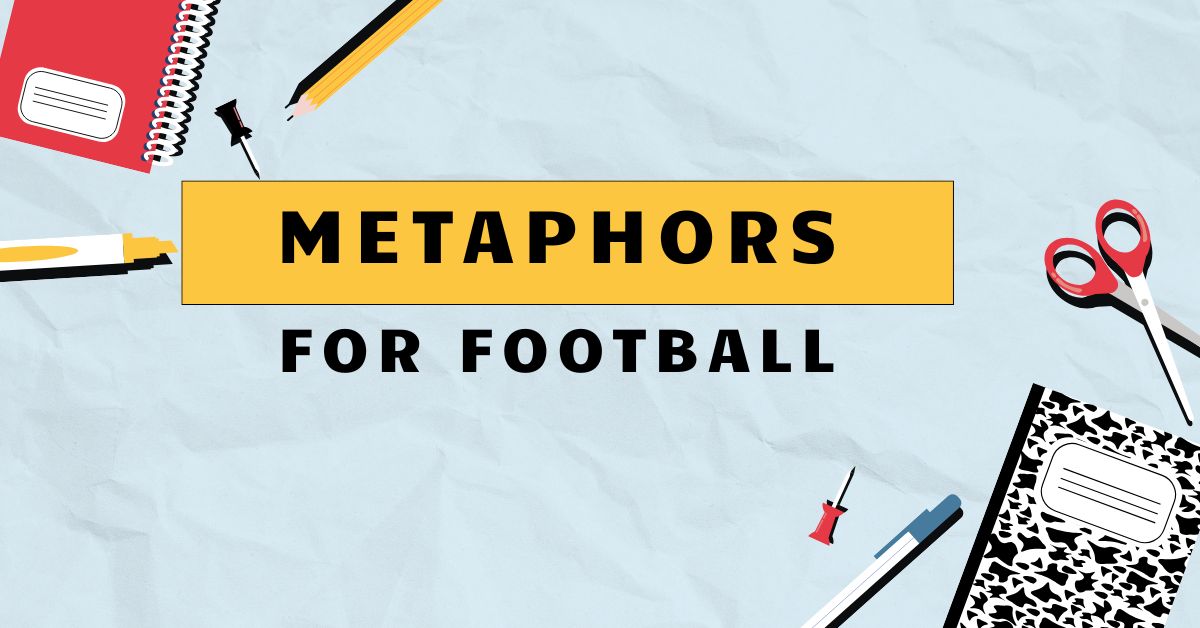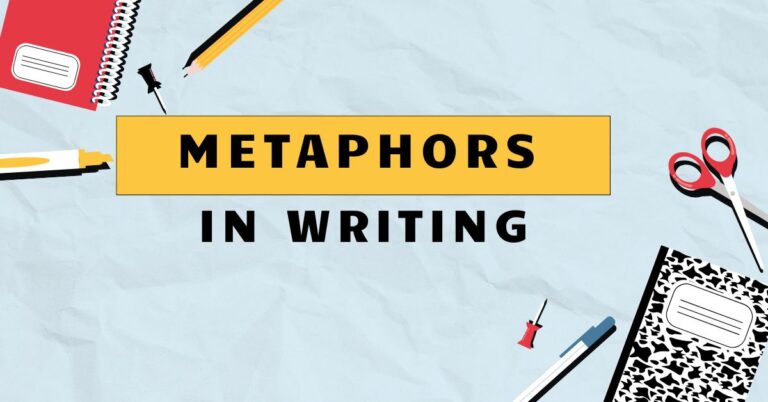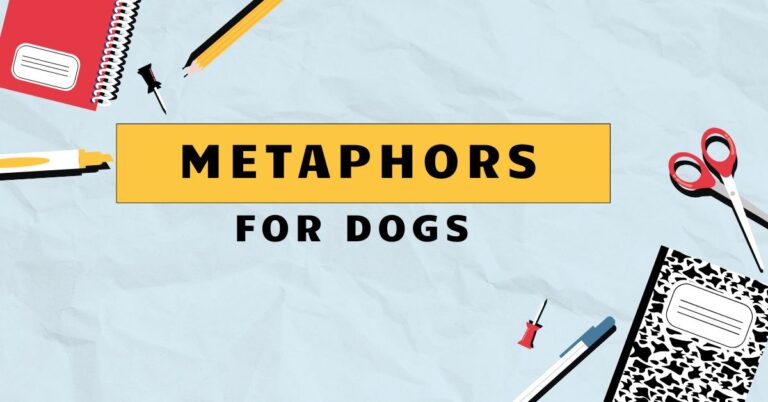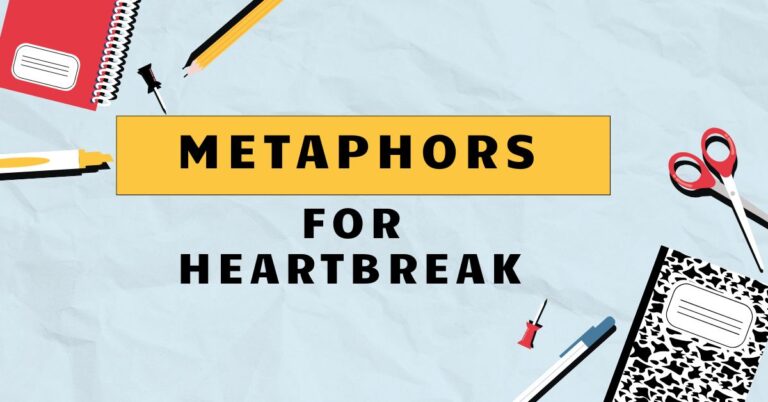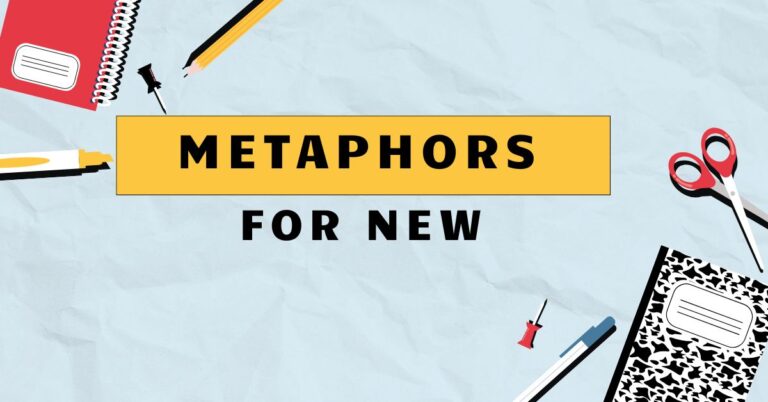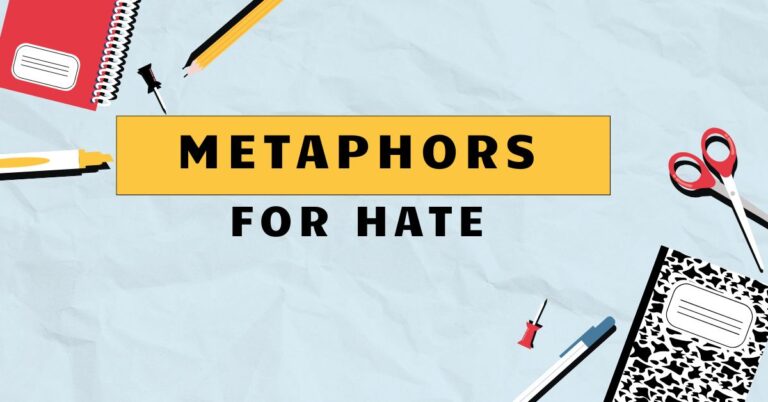45 Metaphors For Football: A Comprehensive Guide
Metaphors are powerful tools that enrich our language, making it more vivid and engaging. In the context of football, metaphors help us understand the intensity, strategy, and emotion of the game.
By exploring these metaphors, we can gain a deeper appreciation for both the sport and the art of language. This article will delve into the world of football metaphors, examining their structure, types, and usage.
Whether you’re a football enthusiast, a language learner, or simply curious about the intersection of sports and language, this guide will provide valuable insights and practical examples to enhance your understanding and communication skills.
This article is designed for English language learners, football fans, and anyone interested in the creative use of language. It will benefit those looking to improve their comprehension of idiomatic expressions, enhance their writing and speaking skills, and gain a deeper appreciation for the nuances of the English language within the context of sports.
Table of Contents
- Definition of Metaphor
- Structural Breakdown of Football Metaphors
- Types of Football Metaphors
- Examples of Football Metaphors
- Usage Rules for Football Metaphors
- Common Mistakes with Football Metaphors
- Practice Exercises
- Advanced Topics: Extended Metaphors and Symbolism
- Frequently Asked Questions
- Conclusion
Definition of Metaphor
Ametaphoris a figure of speech that directly compares two unrelated things. Unlike a simile, which uses “like” or “as” to make a comparison, a metaphor states that one thingisanother.
This comparison is not literal but rather suggestive, creating a deeper understanding or emotional connection. Metaphors are crucial for adding color and depth to language, making it more engaging and memorable.
In the context of football, metaphors help convey the intensity, strategy, and emotional aspects of the game. They allow speakers and writers to paint vivid pictures and evoke strong feelings, making the sport more accessible and relatable to a wider audience.
The function of a metaphor is to transfer qualities from one thing to another, providing insight and creating a more impactful message.
Metaphors are found everywhere: in everyday conversations, literature, poetry, and, of course, sports commentary. Understanding how metaphors work is essential for interpreting language effectively and using it creatively.
Without metaphors, our language would be bland and lack the richness that makes communication so powerful.
Structural Breakdown of Football Metaphors
The structure of a football metaphor typically involves two key elements: thetenorand thevehicle. The tenor is the subject being described (e.g., a football player’s performance), while the vehicle is the object or concept used to describe it (e.g., “a raging bull”).
The metaphor works by transferring qualities from the vehicle to the tenor, creating a new understanding of the subject.
Consider the metaphor “He’s a brick wall on defense.” Here, the tenor is the defender, and the vehicle is “a brick wall.” The qualities of a brick wall – strong, impenetrable, and unyielding – are transferred to the defender, highlighting their effectiveness in stopping the opposing team. This structure allows for a concise yet powerful description of the player’s defensive capabilities.
Effective football metaphors often rely on shared cultural knowledge and understanding of the game. The audience needs to be familiar with both the tenor and the vehicle to fully appreciate the comparison.
For instance, comparing a quarterback to “a field general” only works if the audience understands the strategic role of a general in military operations. When constructing a metaphor, it’s important to consider the audience’s background and knowledge to ensure the comparison is both clear and impactful.
Types of Football Metaphors
Football metaphors can be categorized based on the aspect of the game they describe. Here are some common types:
Offensive Metaphors
These metaphors describe the attacking aspects of football, focusing on scoring, speed, and power. Offensive metaphors often involve aggressive imagery and highlight the team’s ability to break through the opponent’s defense.
Defensive Metaphors
Defensive metaphors emphasize the protective and resistant qualities of a team’s defense. They often involve imagery of barriers, walls, and fortresses, highlighting the team’s ability to prevent the opponent from scoring.
Strategy Metaphors
Strategy metaphors describe the tactical aspects of the game, focusing on planning, execution, and adaptability. These metaphors often involve military or game-related imagery, highlighting the team’s ability to outsmart and outmaneuver the opponent.
Emotional Metaphors
Emotional metaphors convey the feelings and passions associated with football, such as excitement, disappointment, and determination. These metaphors often involve vivid imagery and strong emotional language, highlighting the intensity of the game.
Descriptive Metaphors
Descriptive metaphors paint a vivid picture of players, plays, or game situations. They add color and detail, making the descriptions more engaging and memorable for the audience.
These metaphors can cover a wide range of topics, from player attributes to field conditions.
Examples of Football Metaphors
Here are several examples of football metaphors, categorized by type:
Offensive Metaphors
The following table provides examples of offensive metaphors used in football, illustrating how they describe attacking plays and players.
| Metaphor | Explanation |
|---|---|
| He’s a touchdown machine. | Describes a player who consistently scores touchdowns. |
| The offense is firing on all cylinders. | Indicates that the offense is performing at its peak. |
| They’re a freight train, impossible to stop. | Describes an offense that is powerful and unstoppable. |
| He’s a human highlight reel. | Describes a player who makes spectacular plays. |
| The quarterback is a gunslinger. | Describes a quarterback who takes risks with his passes. |
| They’re carving up the defense. | Indicates that the offense is easily breaking through the defense. |
| He’s a cheetah on the field. | Describes a player with exceptional speed. |
| The running back is a bulldozer. | Describes a player who runs through defenders with force. |
| Their offense is a well-oiled machine. | Describes an offense that operates smoothly and efficiently. |
| He’s a rocket, blasting past defenders. | Describes a player with incredible acceleration. |
| The pass was a bullet. | Describes a very fast and accurate pass. |
| He’s a magician with the ball. | Describes a player with exceptional skill and agility. |
| The offensive line is a wall of granite. | Describes a strong and impenetrable offensive line. |
| They’re lighting up the scoreboard. | Indicates that the offense is scoring frequently. |
| He’s a scoring threat every time he touches the ball. | Describes a player who is always likely to score. |
| The receiver is a hawk, snatching passes out of the air. | Describes a receiver with excellent catching ability. |
| They’re tearing through the defense. | Indicates a very effective and aggressive offense. |
| He is a scoring supernova. | Describes a player who explodes with scoring activity. |
| Their offense is a swarm of bees. | Describes an overwhelming and difficult-to-manage offense. |
| He’s a human cannonball. | Describes a powerful and unstoppable runner. |
| The receiver is glue-handed. | Describes a receiver who rarely drops passes. |
| He attacks the defense like a shark. | Describes a player who aggressively pursues the defense. |
Defensive Metaphors
The following table illustrates defensive metaphors, showcasing how they depict the protective and resistant aspects of a football team’s defense.
| Metaphor | Explanation |
|---|---|
| The defense is a brick wall. | Indicates a strong and impenetrable defense. |
| They’re shutting down the offense. | Indicates that the defense is effectively stopping the opponent’s offense. |
| He’s a heat-seeking missile. | Describes a defender who relentlessly pursues the ball carrier. |
| The defensive line is a steel curtain. | Describes a strong and impenetrable defensive line. |
| They’re swarming the ball carrier. | Indicates that multiple defenders are quickly converging on the ball carrier. |
| He’s a ball-hawking safety. | Describes a safety who is adept at intercepting passes. |
| The defense is airtight. | Indicates that the defense is very difficult to penetrate. |
| He’s an anchor in the defensive line. | Describes a player who provides stability and strength to the line. |
| They’re a defensive fortress. | Describes a defense that is extremely difficult to score against. |
| He’s a brick house. | Describes a strong and immovable defender. |
| The linebacker is a wrecking ball. | Describes a player who aggressively disrupts the offense. |
| He’s a defensive general. | Describes a player who leads and organizes the defense effectively. |
| They’re a defensive juggernaut. | Describes a defense that is powerful and unstoppable. |
| The cornerback is a shadow. | Describes a player who closely covers the receiver. |
| He’s a human eraser. | Describes a player who quickly eliminates offensive threats. |
| The defense is a spider web, trapping the offense. | Describes a defense that is intricate and difficult to escape. |
| They’re suffocating the quarterback. | Indicates relentless pressure on the quarterback. |
| He is a defensive iron curtain. | Describes an impenetrable and formidable defense. |
| Their defense is a pack of wolves. | Describes an aggressive and relentless defensive unit. |
| He’s a defensive wall. | Describes a player who blocks the opposition effectively. |
| The defense is a steel trap. | Describes a defense that is difficult to escape from. |
| He defends like a lion. | Describes a player who defends fiercely and bravely. |
Strategy Metaphors
The following table presents strategy metaphors used in football, illustrating how they depict the tactical aspects of the game.
| Metaphor | Explanation |
|---|---|
| He’s a field general. | Describes a quarterback who effectively leads and manages the offense. |
| They’re running a chess match on the field. | Indicates that the team is employing complex strategies. |
| The coach is a master strategist. | Describes a coach who is skilled at planning and executing game plans. |
| They’re playing with a full deck of cards. | Indicates that the team has a variety of strategies and options available. |
| The game plan is a blueprint for success. | Describes a detailed and well-designed strategy. |
| They’re executing the game plan flawlessly. | Indicates that the team is following the strategy perfectly. |
| The coach is pulling all the right strings. | Indicates that the coach is making effective decisions. |
| He’s orchestrating the offense like a symphony conductor. | Describes a quarterback who directs the offense with precision and skill. |
| They’re outmaneuvering the opponent. | Describes a team that is strategically superior. |
| He’s playing three-dimensional chess. | Describes a player who thinks several steps ahead. |
| The coach is a puppet master. | Describes a coach who controls the game with strategy. |
| They’re setting traps for the opponent. | Indicates that the team is using deceptive strategies. |
| The team is a well-oiled machine. | Describes a team that operates smoothly and efficiently. |
| They’re playing a calculated game. | Indicates that the team is making strategic and deliberate decisions. |
| The coach is a strategic architect. | Describes a coach who designs effective game plans. |
| They’re navigating the field like a GPS. | Describes a team that is precise and accurate in their movements. |
| They’re running circles around the opposition. | Describes a team that is outsmarting the opposing team. |
| He’s a tactical ninja. | Describes a player with strategic brilliance and agility. |
| Their strategy is a secret weapon. | Describes a strategy that gives them a significant advantage. |
| He’s the brains of the operation. | Describes a player who is central to the team’s strategy. |
| The coach is a grandmaster. | Describes a coach with exceptional strategic skill. |
| They plan like generals. | Describes a team that plans their strategies meticulously. |
Emotional Metaphors
The following table provides examples of emotional metaphors used in football, illustrating how they convey the feelings and passions associated with the game.
| Metaphor | Explanation |
|---|---|
| The crowd is a roaring ocean. | Describes the loud and intense atmosphere of the crowd. |
| He’s playing with fire in his eyes. | Indicates that the player is highly motivated and determined. |
| The team is hungry for victory. | Indicates that the team is eager to win. |
| The pressure is a crushing weight. | Describes the intense pressure the players are under. |
| The tension is thick enough to cut with a knife. | Indicates a high level of suspense and anticipation. |
| He’s playing with a chip on his shoulder. | Describes a player who is motivated by a desire to prove himself. |
| The stadium is a cauldron of emotion. | Describes the intense and passionate atmosphere of the stadium. |
| He’s a volcano of energy. | Describes a player who is full of enthusiasm and power. |
| They’re fueled by passion. | Describes a team driven by strong emotions. |
| He’s playing his heart out. | Describes a player giving his maximum effort. |
| The game is a rollercoaster of emotions. | Describes the ups and downs experienced during a game. |
| He’s a lightning rod for excitement. | Describes a player who generates a lot of enthusiasm. |
| The team is riding a wave of momentum. | Indicates that the team is on a winning streak. |
| They’re playing with a vengeance. | Describes a team playing with determination and anger. |
| He’s a spark plug for the team. | Describes a player who ignites the team’s energy and enthusiasm. |
| The game is a battle of wills. | Describes the intense mental and emotional struggle between the teams. |
| They’re playing with unbridled passion. | Describes a team that is playing with intense and unrestrained emotion. |
| He is a titan of emotion. | Describes a player who embodies the emotional intensity of the game. |
| Their energy is a wildfire. | Describes an infectious and intense team energy. |
| He’s a pillar of resilience. | Describes a player who demonstrates strong emotional fortitude. |
| The crowd is a tidal wave of support. | Describes overwhelming and enthusiastic support from the fans. |
| He plays like a man possessed. | Describes a player with intense focus and determination. |
Descriptive Metaphors
The following table illustrates descriptive metaphors, showcasing how they paint a vivid picture of various aspects of football.
| Metaphor | Explanation |
|---|---|
| The field is a gridiron battlefield. | Describes the football field as a site of intense competition. |
| The stadium is a cathedral of sports. | Describes a stadium as a sacred and revered place for sports fans. |
| The ball is a leather teardrop. | Describes the shape and material of the football. |
| The offensive line is a mountain range. | Describes a strong and imposing offensive line. |
| The rain turned the field into a mud pit. | Describes the field conditions after heavy rain. |
| The quarterback’s arm is a cannon. | Describes a quarterback with a powerful throwing arm. |
| The stadium lights are beacons in the night. | Describes the bright and prominent stadium lights. |
| He’s a tower of strength. | Describes a player who is physically imposing and resilient. |
| The game is a symphony of athleticism. | Describes a game that showcases a beautiful display of athletic skill. |
| He’s a human tornado. | Describes a player with chaotic energy and movement. |
| The coach’s voice is a thunderclap. | Describes a coach with a loud and commanding presence. |
| The fans are a sea of colors. | Describes the vibrant and visually striking appearance of the crowd. |
| The game is a chess board. | Describes the strategic complexity of the game. |
| The stadium is a pressure cooker. | Describes the intense and suspenseful atmosphere of the stadium. |
| He’s a rock in the storm. | Describes a player who remains steadfast and reliable under pressure. |
| The field is a canvas for athletic artistry. | Describes the field as a place where athletic skills are showcased. |
| The play is a blur of motion. | Describes the rapid and dynamic movements during a play. |
| He is a force of nature. | Describes a player with overwhelming power and impact. |
| Their teamwork is a delicate dance. | Describes synchronized and harmonious team movements. |
| He’s a well-oiled machine on the field. | Describes a player with smooth and efficient movements. |
| The stadium is a living, breathing entity. | Describes the stadium as a vibrant and animated place. |
| He moves like a panther. | Describes a player with agile and stealthy movements. |
Usage Rules for Football Metaphors
When using football metaphors, it’s essential to ensure that the comparison is appropriate and effective. Here are some guidelines:
- Relevance: The vehicle should have qualities that are genuinely relevant to the tenor. The comparison should make sense in the context of the game.
- Clarity: The metaphor should be easily understood by the audience. Avoid obscure or overly complex comparisons.
- Originality: While some metaphors are common, try to create fresh and original comparisons to make your language more engaging.
- Consistency: Avoid mixing metaphors within the same sentence or paragraph. This can create confusion and weaken the impact of your language.
- Appropriateness: Consider the tone and context of your communication. Some metaphors may be more appropriate for informal settings than formal ones.
Exceptions and Special Cases:
While consistency is generally advised, there are instances where a deliberate mixing of metaphors can be used for stylistic effect. However, this should be done sparingly and with careful consideration.
Additionally, cultural differences can affect the interpretation of metaphors. Be mindful of your audience and choose metaphors that are likely to be understood and appreciated.
Common Mistakes with Football Metaphors
One common mistake is using clichéd metaphors that have lost their impact through overuse. For example, saying “He’s a beast” to describe a strong player is generic and lacks originality.
A better approach would be to find a more specific and vivid comparison, such as “He’s a raging bull, tearing through the defensive line.”
Another mistake is using mixed metaphors, which can create confusion and undermine the clarity of your language. For example, “He’s a brick wall, but he also flies under the radar” combines two conflicting images.
It’s better to stick to a single, consistent metaphor.
Here are some examples of common mistakes and corrections:
| Incorrect | Correct |
|---|---|
| He’s a beast on the field, but he’s also a fish out of water. | He’s a beast on the field, dominating every play. |
| The team is a well-oiled machine running on fumes. | The team is a well-oiled machine, performing with precision. |
| He’s a rock, but he’s also a loose cannon. | He’s a rock, providing stability to the team. |
Practice Exercises
Exercise 1: Identify the Metaphor
Identify the metaphor in each sentence below:
| Question | Answer |
|---|---|
| 1. The quarterback’s arm was a cannon, launching the ball downfield. | cannon |
| 2. The defense was a brick wall, stopping every offensive attempt. | brick wall |
| 3. He was a cheetah on the field, outrunning every defender. | cheetah |
| 4. The stadium was a cauldron of emotion, filled with cheering fans. | cauldron |
| 5. The game plan was a blueprint for success, guiding the team to victory. | blueprint |
| 6. The coach is a master strategist, always one step ahead of the opponent. | master strategist |
| 7. The pressure was a crushing weight, bearing down on the players. | crushing weight |
| 8. He’s a field general, leading the offense with precision. | field general |
| 9. The crowd was a roaring ocean, cheering for their team. | roaring ocean |
| 10. The running back is a bulldozer, plowing through the defense. | bulldozer |
Exercise 2: Create a Metaphor
Create a metaphor to describe each of the following:
| Description | Example Metaphor |
|---|---|
| A fast wide receiver | He’s a lightning bolt, streaking down the field. |
| A strong defensive lineman | He’s an unmovable mountain, blocking every advance. |
| A skilled quarterback | He’s a maestro, conducting the offense with grace. |
| An exciting game | The game was a fireworks display, full of surprises. |
| A dedicated coach | He’s the architect, building a winning team. |
| The intense atmosphere of a rivalry game | The atmosphere was electric, buzzing with anticipation. |
| A powerful running play | The run was a freight train, barreling through the defense. |
| An acrobatic catch | The catch was a gravity-defying miracle. |
| A crushing defeat | The loss was a punch to the gut. |
| The determination of the team | Their resolve was an unbreakable chain. |
Exercise 3: Correct the Mixed Metaphor
Rewrite the following sentences to correct the mixed metaphors:
| Question | Answer |
|---|---|
| 1. He’s a rock, but he also flies under the radar. | He’s a rock, providing stability to the team. |
| 2. The team is a well-oiled machine running on fumes. | The team is a well-oiled machine, performing with precision. |
| 3. He’s a beast on the field, but he’s also a fish out of water. | He’s a beast on the field, dominating every play. |
| 4. The game plan is a roadmap, but they’re also winging it. | The game plan is a roadmap, guiding their every move. |
| 5. The defense is a steel curtain, but they’re also leaking like a sieve. | The defense is a steel curtain, impenetrable and strong. |
| 6. He’s a scoring machine, but he’s also a diamond in the rough. | He’s a scoring machine, consistently finding the end zone. |
| 7. The coach is a puppet master, but he also lets the players run wild. | The coach is a puppet master, controlling every aspect of the game. |
| 8. The stadium is a pressure cooker, but it’s also a breath of fresh air. | The stadium is a pressure cooker, filled with intense energy. |
| 9. They’re building a dynasty, but they’re also starting from scratch. | They’re building a dynasty, brick by brick. |
| 10. He’s the heart of the team, but he’s also a lone wolf. | He’s the heart of the team, driving their passion and determination. |
Advanced Topics: Extended Metaphors and Symbolism
Advanced learners can explore the use of extended metaphors, where a single metaphor is developed and sustained throughout a longer passage or speech. This can create a powerful and cohesive effect, deepening the audience’s understanding and engagement.
For example, a writer might use the metaphor of a “journey” to describe a team’s season, exploring the challenges, obstacles, and triumphs along the way. Each game could be seen as a step on the journey, and the final championship as the destination.
By consistently developing this metaphor, the writer can create a richer and more meaningful narrative.
Another advanced topic is the use ofsymbolismin football commentary. Certain players, plays, or even colors can take on symbolic meanings, representing broader themes or ideas.
For instance, a team’s signature play might symbolize their overall strategy or philosophy. Understanding these symbolic meanings can add a deeper layer of interpretation to the game.
Frequently Asked Questions
- What is the difference between a metaphor and a simile?
A metaphor directly compares two unrelated things by stating that one is the other, while a simile uses “like” or “as” to make a comparison. For example, “He’s a brick wall” (metaphor) vs. “He’s like a brick wall” (simile).
- Why are metaphors used in football commentary?
Metaphors add color, depth, and excitement to football commentary. They help convey the intensity, strategy, and emotional aspects of the game in a more engaging and memorable way.
- How can I improve my ability to understand and use metaphors?
Read widely, pay attention to how metaphors are used in different contexts, and practice creating your own metaphors. Consider the qualities of the tenor and vehicle, and ensure that the comparison is relevant and clear.
- What are some common sources of football metaphors?
Common sources include military imagery, animal comparisons, natural phenomena, and everyday objects. These sources provide a rich vocabulary for describing the various aspects of the game.
- Can metaphors be misinterpreted?
Yes, metaphors can be misinterpreted if the audience is unfamiliar with the vehicle or if the comparison is unclear. It’s important to consider your audience and choose metaphors that are likely to be understood and appreciated.
- How do cultural differences affect the interpretation of metaphors?
Cultural differences can influence the understanding and appreciation of metaphors. Some metaphors may be more meaningful or relevant in certain cultures than others. Be mindful of cultural context when using metaphors.
- What is an extended metaphor?
An extended metaphor is a metaphor that is developed and sustained throughout a longer passage or speech. This can create a powerful and cohesive effect, deepening the audience’s understanding and engagement.
- How can I avoid using clichéd metaphors?
Look for fresh and original comparisons. Consider the specific qualities you want to highlight and think about unconventional ways to describe them. Use a thesaurus to find alternative words and phrases.
- What role does symbolism play in football?
Symbolism can add a deeper layer of interpretation to the game. Certain players, plays, or colors can take on symbolic meanings, representing broader themes or ideas.
- How do metaphors enhance storytelling in sports?
Metaphors enhance storytelling by creating vivid imagery, evoking emotions, and adding depth to the narrative. They allow writers and speakers to convey complex ideas in a more accessible and engaging way.
Conclusion
Mastering the use of metaphors in the context of football can significantly enhance your
communication skills and deepen your appreciation for the game. By understanding the structure, types, and usage rules of football metaphors, you can effectively convey the intensity, strategy, and emotion of the sport.
Avoid common mistakes, practice regularly, and explore advanced topics such as extended metaphors and symbolism to further refine your abilities. Whether you’re a football enthusiast, a language learner, or simply someone who enjoys the creative use of language, the world of football metaphors offers endless opportunities for learning and expression.
So go ahead, dive in, and let your language soar!

